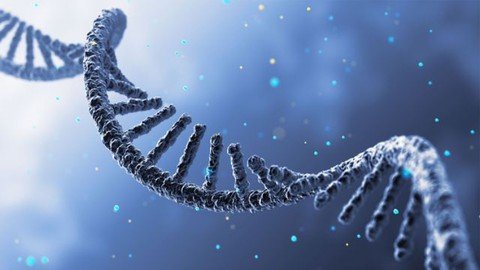
Published 5/2023
MP4 | Video: h264, 1280x720 | Audio: AAC, 44.1 KHz
Language: English | Size: 2.71 GB | Duration: 5h 16m
Become a master in performing RNAseq analysis on linux command-line and use R to perform DE analysis and clustering
Free Download What you'll learn
Basics of NGS data analysis and how to perform Differential gene expression analysis for RNAseq dataset
Generating Quality Control metrics and statistics
Mapping Reads to the genome
Differential gene expression
Using Conda for installation of bioinformatics tools
Processing RNA sequencing data
UNIX command-line tools for processing the data
Transcript quantification
Performing Principal Component Analysis (PCA)
Performing Clustering analysis using gene expression data
Requirements
Background knowledge of biology
Interest in working with UNIX command-line tools
Interest in bioinformatics tools installation
Interest in genomics as well as applying computational methods for processing transcriptomics datasets
No programming experience needed. You will learn everything you need to know
All downloadable resources provided
Description
In this course, you will learn how to perform RNAseq data analysis via linux command line. This course provides a comprehensive introduction to RNAseq data analysis, covering the key concepts and tools needed to perform differential expression analysis and functional annotation of RNAseq data. Students will learn how to preprocess raw sequencing data, perform quality control, and align reads to a reference genome or transcriptome. The course will also cover differential expression analysis using statistical methods and visualisation of results using popular tools such as R. You will learn how to do end-to-end RNAseq data analysis which includes pre-processing of RNAseq data, Quality Control analysis, Differential Gene Expression analysis, Clustering and Principal Component Analysis of the gene expression data. You will also learn how to download data, install the bioinformatics/IT softwares using Conda/Anaconda on Mac, Windows or Linux platforms. I will guide you through performing differential expression analysis on RStudio (graphical user interface for R language).Throughout the course, students will work with real-world datasets and gain hands-on experience with popular bioinformatics tools and software packages. By the end of the course, students will have a thorough understanding of RNAseq data analysis and will be able to perform their own analyses of gene expression data. This course is ideal for researchers, scientists, and students who are interested in understanding the molecular basis of gene expression and exploring the potential applications of RNAseq technology. No prior bioinformatics or programming experience is required, but a basic knowledge of molecular biology and genetics is recommended.
Overview
Section 1: Introduction and Installation
Lecture 1 Introduction
Lecture 2 Installing Conda
Lecture 3 Installing Bioinformatics tools using Conda
Section 2: Preparing Data for Analysis
Lecture 4 Organising the files
Lecture 5 Obtaining the Raw Data
Lecture 6 Obtaining the Genome files
Section 3: Quality Control of RNA-seq data
Lecture 7 QC analysis using FastQC for Single-End and Paired-End reads
Section 4: Read Trimming and QC analysis
Lecture 8 Adaptor and Quality Trimming using Trimmomatic
Lecture 9 QC analysis of Trimmed Reads using MultiQC
Section 5: Genome Indexing and Read Mapping
Lecture 10 Genome Indexing using STAR
Lecture 11 Read Mapping using STAR
Section 6: Duplicate Read Marking
Lecture 12 Marking Duplicate reads using Picard and indexing BAM files
Section 7: Obtaining Alignment Statistics
Lecture 13 Printing Alignment statistics using Bamtools
Section 8: Obtaining Counts (read abundance) using FeatureCounts
Lecture 14 Generating Gene Counts for DE analysis
Section 9: Differential Expression (DE) analysis using DESeq2 on RStudio
Lecture 15 Preparing the files for DE analysis
Lecture 16 Installing libraries for DE analysis on RStudio
Lecture 17 Performing the DE analysis using DESeq2 - Part1
Lecture 18 Performing the DE analysis using DESeq2 - Part2
Section 10: Principal Component Analysis and Clustering analysis of gene expression data
Lecture 19 Performing PCA analysis and generating PCA plot
Lecture 20 Performing Clustering analysis of gene expression data
People interested in learning Next Generation Sequencing data analysis methods,Beginner Bioinformatician looking to understand end-to-end pipeline for transcriptomics data analysis,People looking to understand differential gene expression analysis,People interested to carry out bioinformatics analysis with command-line tools
Homepage
https://www.udemy.com/course/rnaseq-data-analysis-using-shell-scripting-and-r/
Buy Premium From My Links To Get Resumable Support,Max Speed & Support Me
Links are Interchangeable - Single Extraction
Comments

